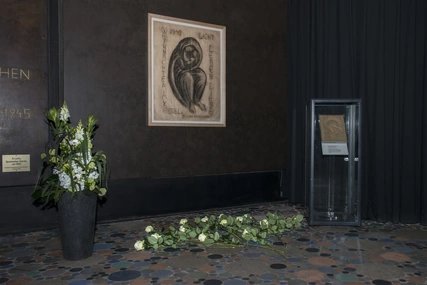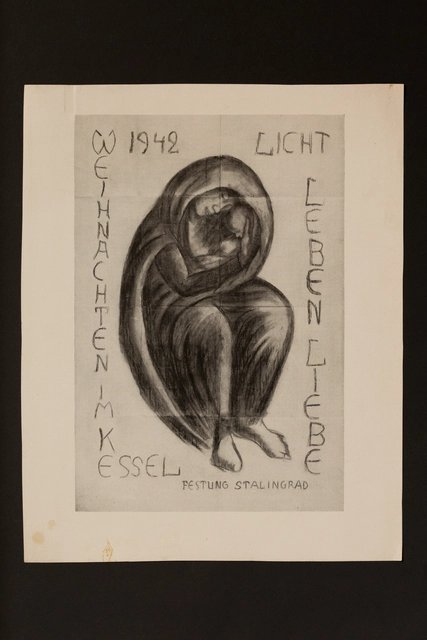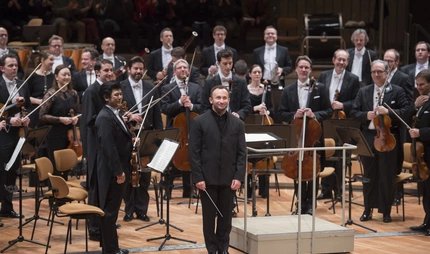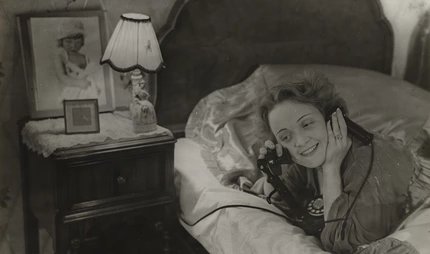
With courage Berlin has already made it through many a crisis. That is why we have taken a look at the past 600 years of history for you and discovered many powerful stories that are unmistakable for Berlin, for Berliners. Let us inspire you.
It is a miracle in more ways than one: the Madonna of Stalingrad, which can be seen today in the Kaiser Wilhelm Memorial Church, is still as moving today as she was on Christmas Eve 1942.
Christmas 1942, for weeks the soldiers have been sitting encircled in a bunker in Stalingrad. The temperatures are 30 to 40 degrees below zero, the supply situation is bad. On Christmas Eve, the Protestant pastor and doctor Kurt Reuber gives his comrades a spark of hope with a simple charcoal drawing.
Encircled in Stalingrad
Outside, the battle for Stalingrad is raging, bombs are falling. The soldiers are locked in their bunker, hungry and freezing. Among them is the theologian and physician Kurt Reuber. The father of three and pastor from Hesse has already attracted the attention of the National Socialists several times because of his anti-fascist attitude. In 1939, he was sent to the Eastern Front as a troop doctor. Here, too, he stands up for humanity and charity, caring for civilians and instilling Christian confidence in his comrades.
By Christmas 1942, the battle for Stalingrad, arguably one of the worst and most costly battles in world history, has long since been decided. The Wehrmacht has lost. The soldiers have long since ceased to believe in the promised liberation from the cauldron. Nevertheless, they are preparing for Christmas, saving their already scarce food rations from their mouths, carving and making Christmas decorations out of wood chips.
"Festive level in all poor dirt".
"Festive level in all poor dirt," Reuber writes home to his wife Martha Reuber-Iske. He himself is busy preparing a very special surprise for Christmas Eve. Secretly he works on a simple drawing, which he makes with a piece of charcoal on the back of a Russian map.
Light, life, love

The image shows a seated woman holding a newborn baby in her wide hooded cloak. Her strong hand holds protectively the head of the child. The eyes of the two are closed. The facial features of the barefoot Madonna appear surrendered, but also peaceful. "Christmas in a cauldron: light, life, love" Reuber writes in the margin of the drawing.
On December 24, the bunker crew sings "Silent Night" together, commander Wilhelm Grosse gives a speech. And then Reuber opens the door to a small hut in the narrow bunker for his comrades. Illuminated by a candle, the soldiers see their Madonna for the first time. Reuber has nailed the drawing to a wooden board on the mud wall.
Icon of hope
"Look in the child the firstborn of a new humanity, born in pain, outshining all darkness and sadness. Let it be for us a symbol of victorious, future-joyful life, which we want to love all the more hotly and more genuinely after all death experience, a life, which is worth living only to us, if it is light-radiatingly pure and love-warmly", writes Reuber in his farewell letter to his wife. A severely wounded officer delivers this together with the "Madonna of Stalingrad". He had been flown out of Stalingrad on the last German plane. Doctor Reuber did not return home.
His Madonna of Stalingrad has since become an icon. At the suggestion of German President Karl Carstens, the Reuber family presented the original to the Kaiser Wilhelm Memorial Church in Berlin. Today, numerous copies of the Stalingrad Madonna admonish peace around the world and tell of the miraculous glimmer of hope that Kurt Reuber gave his comrades in Stalingrad at Christmas 1942.
You can also find more powerful stories from Berlin in our ABOUT BERLIN app. You can download it for free for iPhone and Android.


There is a lot to tell. ABOUT BERLIN.




